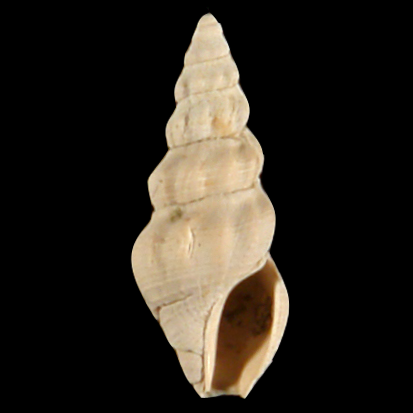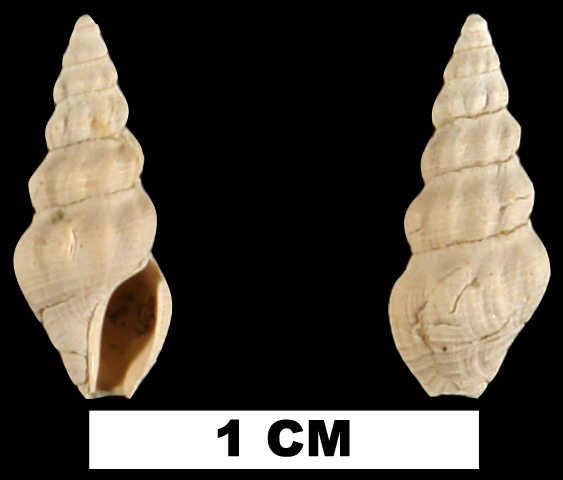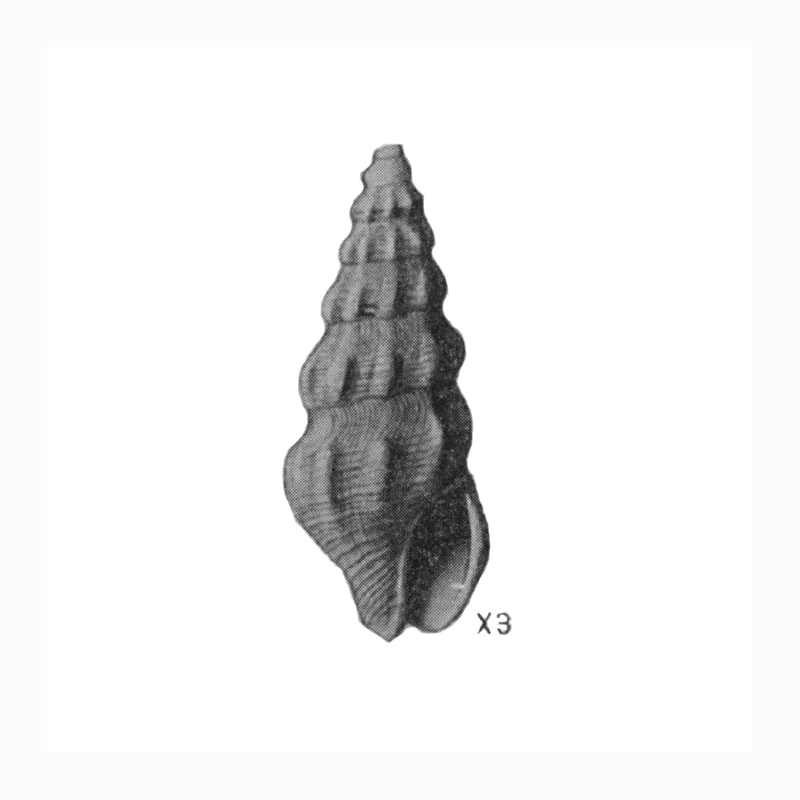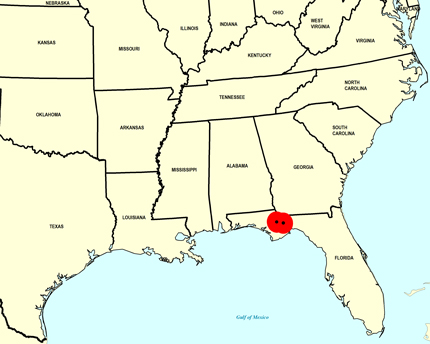
Clathrodrillia gracilina

- Phylum: Mollusca
- Class: Gastropoda
- Order: Neogastropoda
- Family: Drilliidae
- Genus: Clathrodrillia
- Species: Clathrodrillia gracilina (Mansfield, 1930)
Geological Range
Late Pliocene; Extinct.
Paleogeographic Distribution
Northern Florida.
Remarks
Original Description (from Mansfield, 1930, p. 38-39):
"Shell moderately slender, high-spired, strongly axially and weakly spirally sculptured, with about 8 whorls. Body whorl about half the shell length. Whorls low over the roundly excavated and wide anal fasciole and moderately high at lower two-thirds of length, separated by a loosely appressed suture. Apical turn small, smooth, and hemispherical. Following volution inflated, marked at initiation by 5 minute spiral threads, shortly followed by faint axials, giving under magnification a reticulate sculpture. Axials uniformly increase in strength on the advancing whorls. Spire whorls axially sculptured with strong roundly crested ribs (9 on the penultimate whorl) occupying the lower two-thirds of the whorl and separated by rounded-bottomed interspaces. Spiral sculpture of primary narrow bands and secondary threads. About 3 primaries occupy the periphery and base on the early whorl, increasing to 7 on the penultimate whorl. Secondary threads lie on the anal fasciole and usually one or two between the primaries. On body whorls, axials terminate at the base but spirals continue over the canal. Primary spirals over the periphery similar to those of spire whorls but forward consist of widely spaced semi-rounded strong threads with intercalated weaker threads. Aperture short and wide. Anal fasciole moderately deep and wide. Outer lip arched, bordered by a varix. Canal very short, wide, and terminally reflected. Siphonal fasciole ornamented with closely-set spiral lines.
Type (U.S.N.M. Cat. No. 112708) measures: Altitude, 13.5 mm.; (tip decollate); diameter, 5.5 mm.
The description is made from two specimens, a type with broken-off nucleus and a paratype with a well-preserved nucleus.
The species is related to "Drillia sumterensis" Gardner and Aldrich, described from near Mayesville, S.C., but differs from that species in possessing a less slender shell with whorls stronger-shouldered in front of the anal fasciole. It is also closely related to "Drillia ecphorae" Olsson, described from the Duplin marl at the Natural Well, N.C., but the new species has a more depressed anal fasciole with fainter spiral sculpture and more subdued entering axials.
Occurrence: Upper Miocene: Station 2210, upper bed at Alum Bluff, Liberty County, Fla., type locality; station 3421, Harveys Creek, about half a mile above abandoned mill, Leon County, Fla., paratype locality; ?station 3422, upper bed at Jackson Bluff, Leon County, Fla. Rare at all localities.
This species does not appear to have been described or figured, but specimens designated by a catalogue number and the retained name are in the U.S. National Museum collection."
To access this description in its original formatting through the Florida Geological Survey, click here.
Stratigraphic Occurrences
- Late Pliocene
- Jackson Bluff Formation (N. FL)


